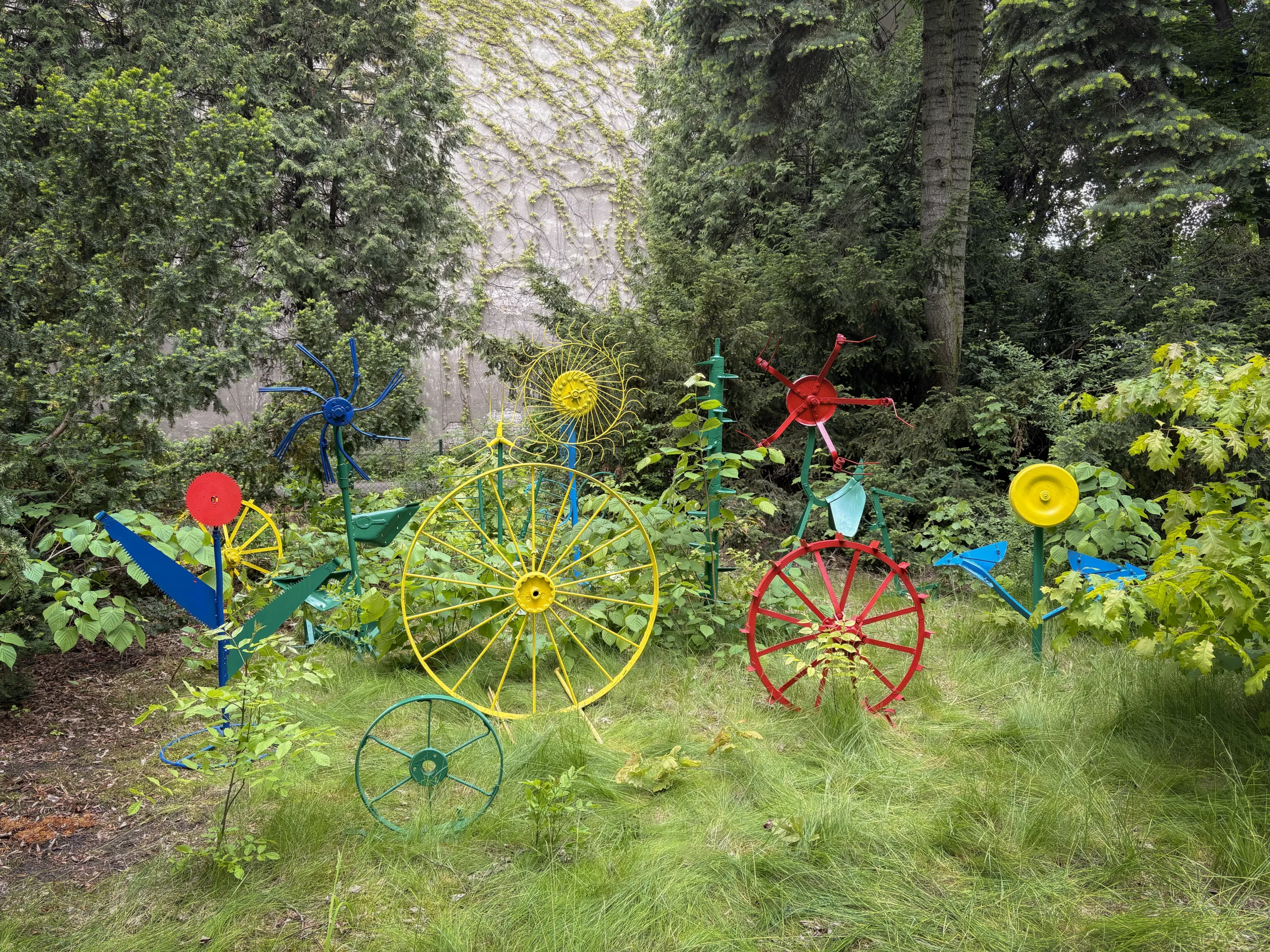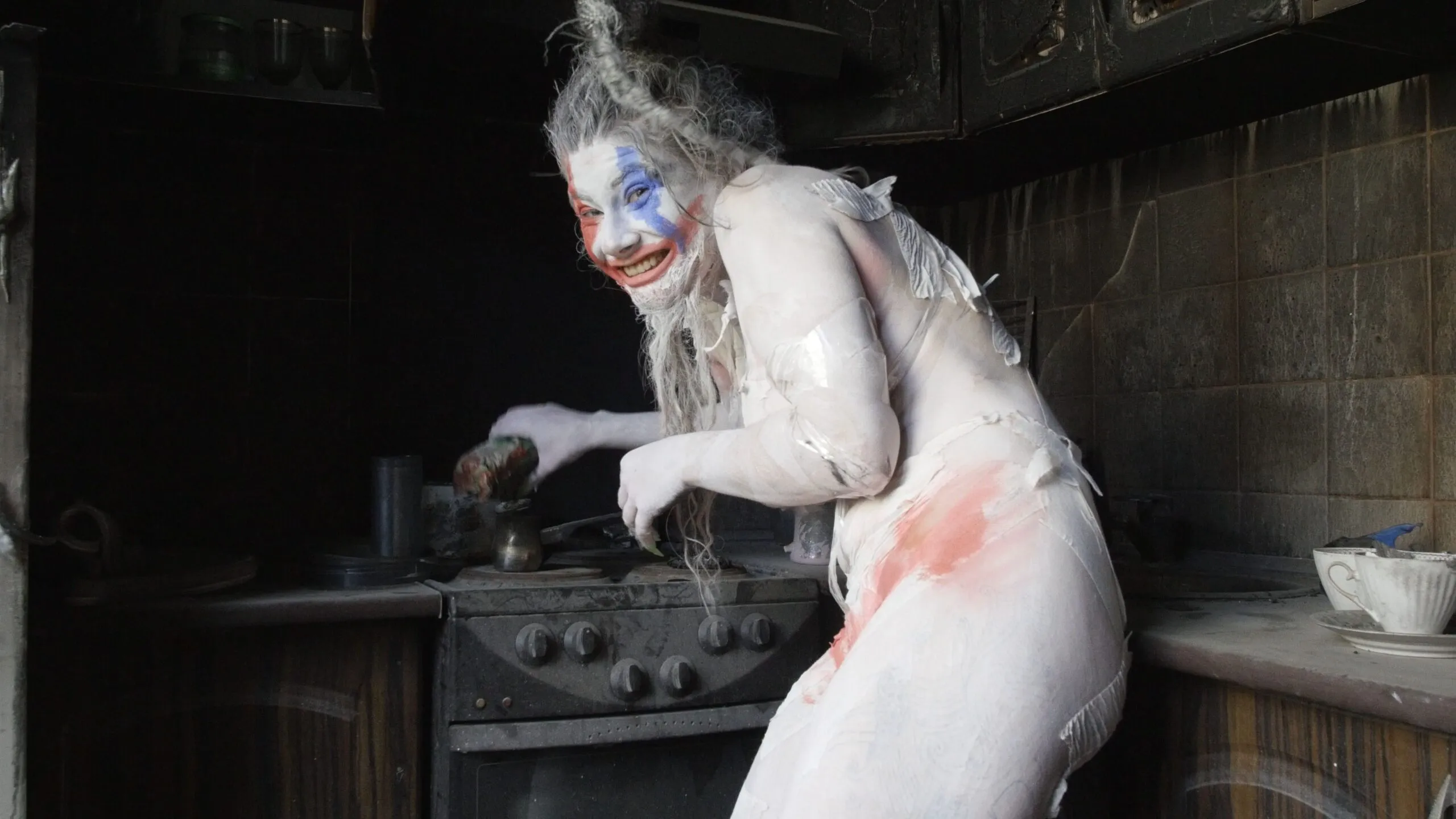NADA Villa Warsaw
May 22–25, 2025
Villa Gawrońskich
Al. Ujazdowskie 23
Warsaw, Poland
VIP Preview (by Invitation):
Wednesday, May 21, 7 – 11 pm
Open to the Public:
Thursday, May 22: 4 – 7 pm
Friday, May 23 – Sunday, May 25: 12 – 7 pm
Experience Daniel Rycharski’s sculpture in the garden and Alina Kleytman’s video screening on the 2nd floor of the Villa!
For inquiries, please contact us at info@gunianowikgallery.com or +48 516 044 272

For NADA Villa Warsaw 2025, Gunia Nowik Gallery presents Winter Garden 3 (2024), an outdoor sculptural installation by Polish conceptual artist Daniel Rycharski (b. 1986). Deeply rooted in rural environments, Rycharski’s practice explores the intersections of tradition and modernity, identity and transformation, faith and queerness. His work directly engages local communities, often repurposing agricultural materials to create artworks that challenge and expand prevailing narratives of life in the countryside in contrast to urban realities.
Premiering in the overgrown garden of Villa Gawrońskich, Winter Garden 3 features oversized metal flowers crafted from discarded farming tools sourced from Rycharski’s native village of Kurówko. Transformed through a systematic yet vibrant color palette, the obsolete implements become striking symbols of resilience and renewal. The installation underscores tensions between past and present, utility and aesthetics, while engaging with discourses on labor, rural modernization, and the erasure of agrarian traditions. Rycharski’s site-responsive work poetically reflects on pressing cultural and existential questions, inviting contemplation on the future of communities historically defined by their connection to the land.

Inside the villa, we will screen PLACE TO SEE BEFORE YOU DIE (2024), the latest video work by Ukrainian artist Alina Kleytman (b. 1991, Kharkiv). Framed as a surreal promotional video, the work presents war-torn Kharkiv as a tourist destination, with a dispassionate voiceover guiding viewers through ruins, mass graves, and trauma sites repackaged as attractions. The central figure—DIRTY WHITE, a mythical persona performed by the artist—moves through the devastated city absorbing collective hatred and grief, offering a sharp commentary on war, memory, and the spectacle of violence.
Kleytman’s multidisciplinary practice spans sculpture, performance, and video, often merging synthetic materials with found objects from conflict zones. Her work explores systems of power, violence, personal and collective trauma, and self-mythologization. Kleytman creates charged, symbolic forms that echo far beyond her immediate context, raising urgent questions about resilience, ideology, and the global commodification of suffering.